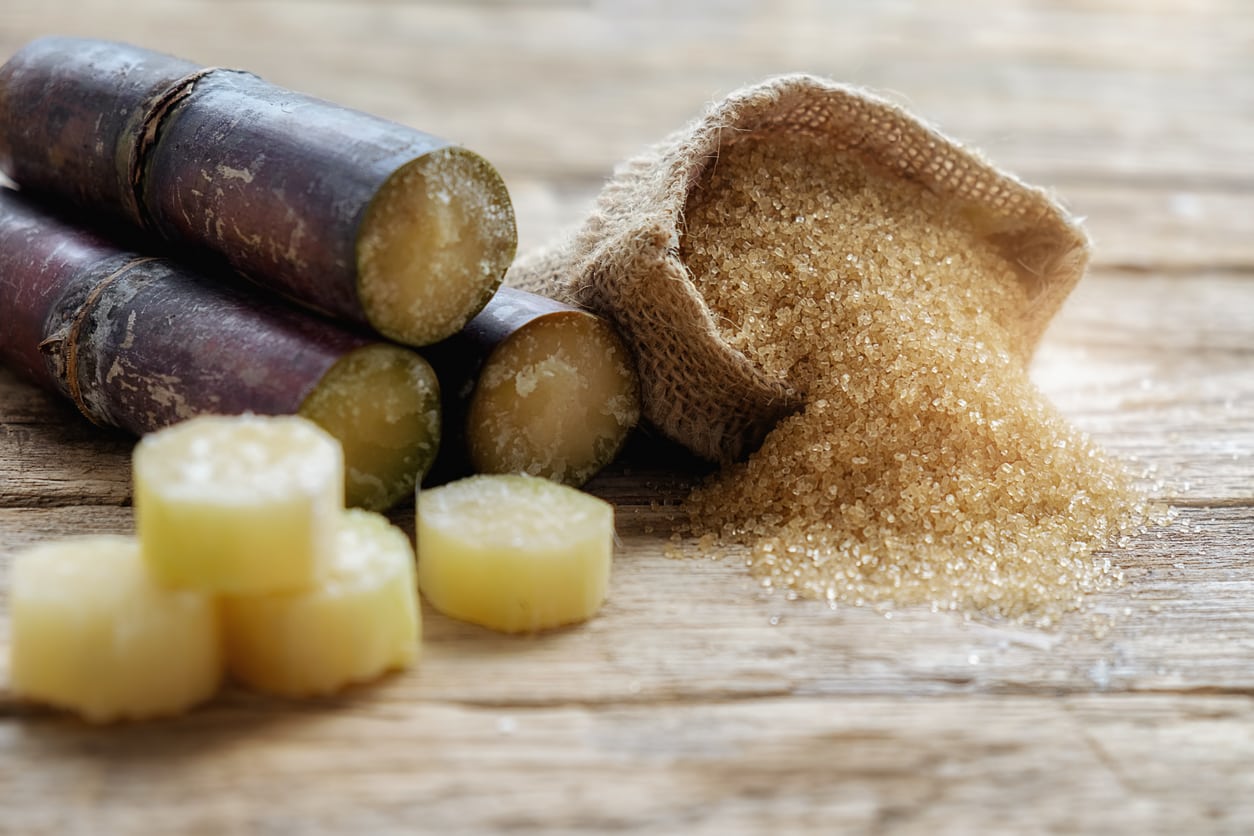How Sugar and Cane Are Used in the Production of Natural Sweeteners
How Sugar and Cane Are Used in the Production of Natural Sweeteners
Blog Article
Why Cane Sugar Processing Chemicals Are Critical for Modern Sugar Refining
The function of walking cane sugar processing chemicals in contemporary sugar refining can not be overstated, as they are important to improving both the efficiency of removal and the total top quality of the final product. Representatives such as phosphoric acid and details flocculants are utilized to get rid of impurities, resulting in sugar that not only fulfills customer assumptions however also adheres to industry criteria. The effects of these chemicals prolong past quality, touching upon market characteristics and ecological considerations. sugar and cane. This increases vital questions regarding the sustainability of such techniques and their effect on the future of sugar manufacturing.
Role of Handling Chemicals
The effectiveness of walking cane sugar processing pivots considerably on the tactical application of processing chemicals. These chemicals play an essential function in improving the efficiency and top quality of sugar extraction and refining. From the first stages of juice removal to the final filtration steps, handling chemicals help with various crucial operations.
In the extraction stage, chemicals such as phosphoric acid and calcium hydroxide are employed to optimize the clarification process, helping to eliminate impurities and suspended solids from the walking cane juice. This not only boosts the return however additionally makes sure the clearness of the last item. In addition, agents like flocculants help in the rapid settling of contaminations, thus simplifying the overall procedure.
As the handling developments, chemicals are made use of in decolorization and formation stages. Triggered carbon and ion exchange resins offer to eliminate shade and smell, guaranteeing that the polished sugar satisfies consumer quality criteria. Inevitably, the duty of handling chemicals expands past functional effectiveness; they substantially influence the sensory qualities of the end product, adding to market competition. Thus, the thorough selection and application of these chemicals are essential for attaining optimal end results in walking stick sugar processing.
Secret Kinds Of Chemicals
Walking cane sugar handling relies upon a selection of essential chemicals that help with each stage of production. These chemicals play vital duties in clearing up, lightening, and cleansing the sugar drawn out from walking cane.
One key category of chemicals includes flocculants, such as polyacrylamide, which aid in the explanation process by promoting the aggregation and settling of impurities. Additionally, calcium hydroxide is usually used to counteract acidity and aid in the removal of non-sugar elements.
Lightening representatives, such as activated carbon and sulfur dioxide, are utilized to decolorize the syrup, causing a clearer last item. These chemicals help remove shade compounds that may affect the sugar's look and bankability.
In addition, phosphoric acid acts as a pH regulator during the processing stages, ensuring ideal problems for the enzymatic tasks associated with sugar removal and filtration.
Various other essential agents consist of edta (ethylenediaminetetraacetic acid), which chelates metal ions that might catalyze unwanted responses, and sodium hydroxide, which assists in pH control throughout the refining process. Jointly, these chemicals enhance efficiency and guarantee a top quality walking cane sugar product.
Benefits for Sugar High Quality
Frequently neglected, the usage of details handling chemicals considerably enhances the total top quality of walking cane sugar. These chemicals play an essential role in refining processes, making certain that the last item fulfills rigorous sector standards for purity and preference.
:max_bytes(150000):strip_icc()/canesugarBURCUATALAYTANKUT-42971cd7f8b84b4fb756984c18728339.jpg)
Furthermore, refining chemicals aid in attaining a consistent granulation and structure, which are important for consumer approval. By controlling the crystallization process, these chemicals make sure that the sugar crystals form uniformly, causing an extra enticing product that dissolves well in numerous applications.
Furthermore, using these chemicals can enhance the service life of cane sugar by decreasing dampness absorption and microbial growth. Generally, the calculated application of handling chemicals is vital for supplying premium cane sugar that satisfies customer expectations and sector needs.
Environmental Influence Factors To Consider

Moreover, the energy-intensive nature of sugar refining, worsened by chemical use, commonly leads to raised carbon emissions. This adds to climate modification and increases worries concerning the sustainability of current refining practices. In addition, the sourcing of these chemicals may include methods that endanger biodiversity, such as monoculture farming, which lowers the resilience of farming ecological communities.

To alleviate these influences, sugar refiners are increasingly exploring sustainable choices and adopting finest practices that reduce chemical use. Carrying out rigorous environmental monitoring systems can assist guarantee that the refining procedure aligns with environmental criteria and promotes biodiversity. Eventually, a well balanced approach that prioritizes both sugar quality and ecological stewardship is crucial for the long-term stability of the sugar industry.
Future Patterns in Refining
As the sugar market comes to grips with the environmental challenges connected with traditional refining approaches, innovative methods are arising to enhance both performance and sustainability. One considerable trend is the fostering of eco-friendly chemistry concepts, which focus on using non-toxic, biodegradable handling chemicals. This shift not just lessens environmental impact however additionally addresses customer demand for cleaner manufacturing methods.
Another appealing growth is the implementation of sophisticated filtering technologies, such as membrane separation and adsorption processes. These methods improve the clearness and quality of the sugar while lowering the volume of wastewater generated throughout refining. Additionally, the integration of digital innovations, consisting of IoT and AI, is changing functional performance by allowing real-time monitoring and predictive maintenance, thus reducing resource waste.
Moreover, the use of by-products from sugar refining, such as bagasse and molasses, is obtaining grip. These materials can be exchanged biofuels or value-added products, contributing to a circular economic situation within the sector. Jointly, these fads signify a change in the direction of even more lasting techniques that not only enhance functional effectiveness but also straighten with global sustainability objectives, making certain the future viability of sugar refining.
Final Thought
Walking cane sugar handling chemicals are necessary in contemporary sugar refining, dramatically boosting the performance and quality of sugar removal. The tactical use of these chemicals not only enhances the purity and flavor of the end product but additionally makes sure constant formation and structure. As the sector increasingly prioritizes sustainability, the fostering of environmentally-friendly processing agents is most likely to shape future fads in refining, inevitably bring about better items and extended rack life for consumers.

Inevitably, a balanced strategy that focuses on both sugar quality and ecological stewardship is important for the long-term practicality of the sugar sector.
Walking cane sugar handling chemicals are important in contemporary sugar refining, dramatically enhancing the effectiveness and quality of sugar extraction.
Report this page